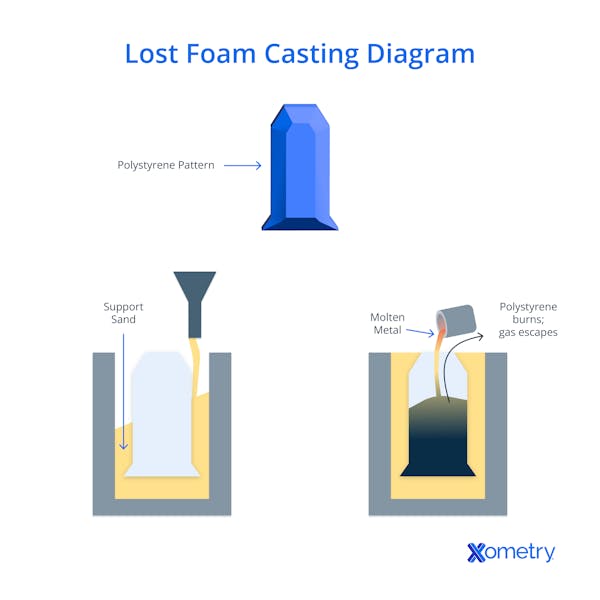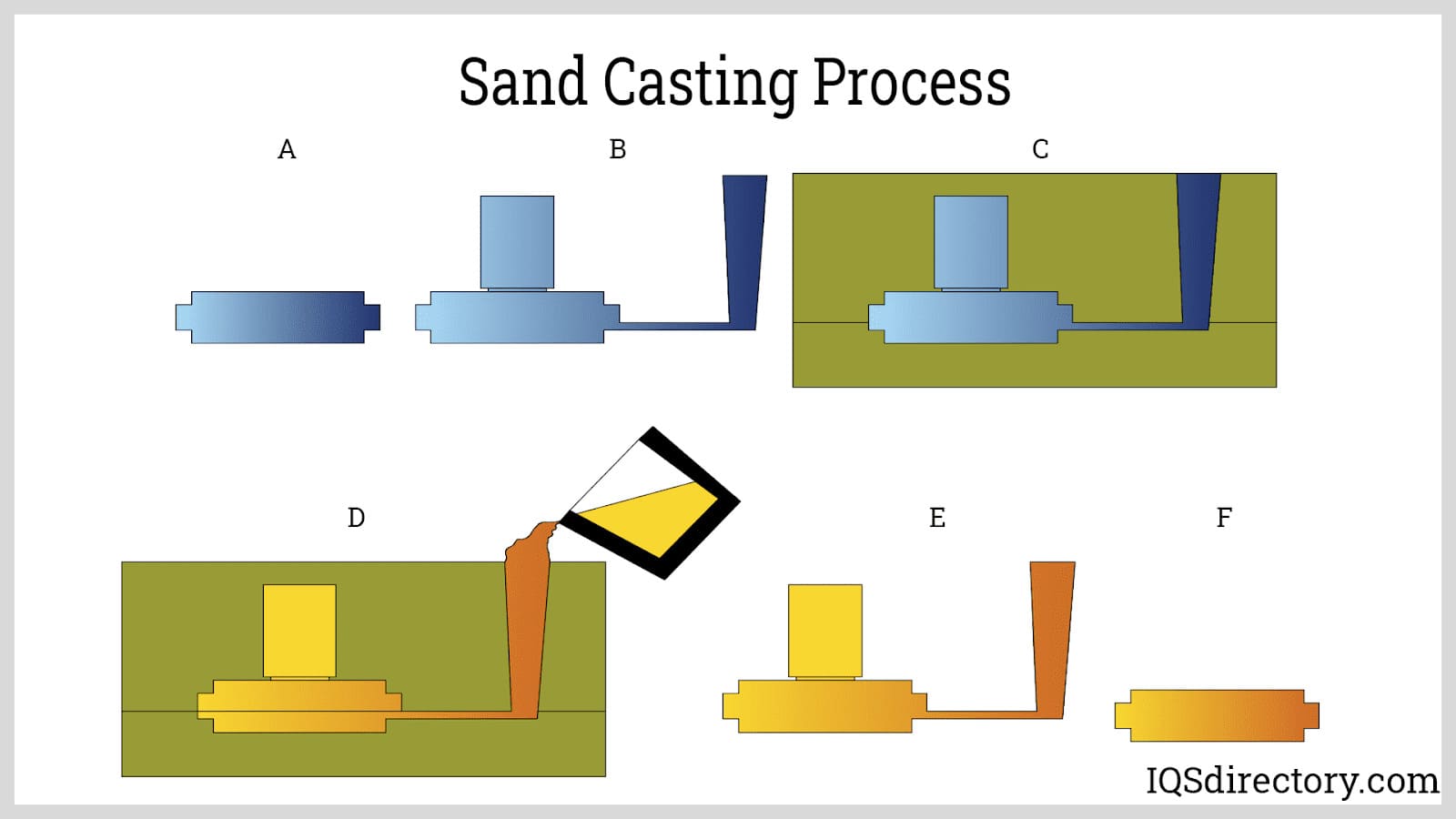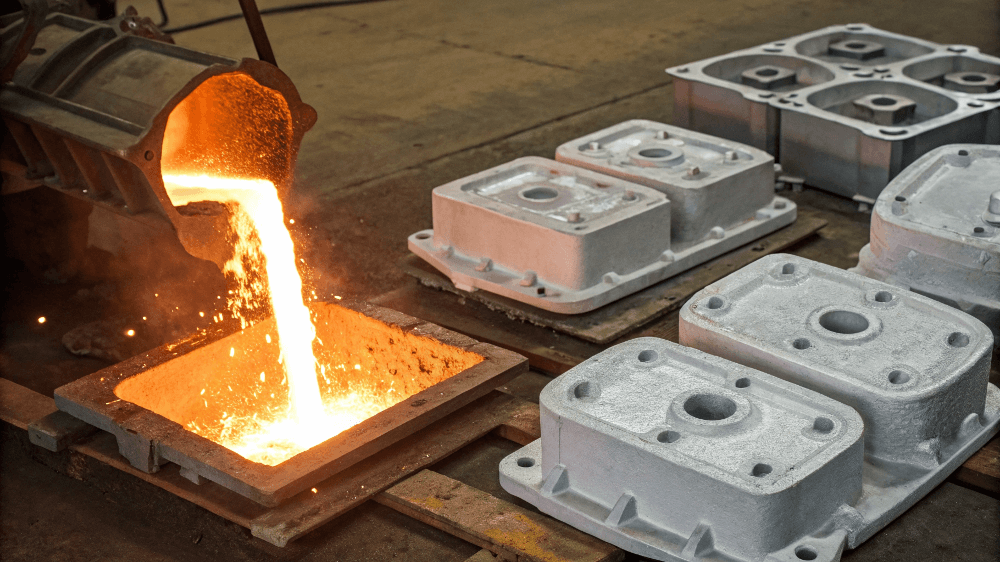Exactly How Aluminum Foundry Adds to Developments in Aerospace Engineering
Aluminum factories are integral to improvements in aerospace engineering. They produce lightweight, high-strength elements that are essential for contemporary airplane. With advanced spreading strategies, these foundries produce intricate geometries that boost structural integrity. Furthermore, the advancement of superior Aluminum alloys sustains the sector's focus on gas efficiency and sustainability. Obstacles stay in the production process. Recognizing these aspects reveals the extensive influence of Aluminum on aeronautics's future.
The Significance of Lightweight Products in Aerospace Layout
As the aerospace industry remains to advance, the importance of light-weight materials ends up being significantly noticeable. The demand for effectiveness and sustainability drives engineers to focus on making use of products that decrease overall weight without endangering structural honesty. Lightweight products, especially Aluminum, play a vital role in enhancing gas performance, enhancing haul capacity, and increasing the overall performance of aircraft.
The combination of these products allows for ingenious designs, making it possible for manufacturers to produce more wind resistant shapes that can stand up to severe problems. The decrease in weight not just lowers operational prices but additionally adds to a lowered environmental impact, lining up with worldwide efforts towards sustainability in aviation.
Advanced Casting Techniques in Aluminum Foundries
Advanced casting techniques in Aluminum shops play an important function in aerospace design by making it possible for the production of precise and lightweight parts. Advancements in mold style and accuracy casting processes are essential in accomplishing optimal efficiency and architectural integrity. In addition, the development of light-weight alloys improves the general efficiency and effectiveness of aerospace applications.
Ingenious Mold And Mildew Design
Cutting-edge mold design plays a vital function in the efficiency and effectiveness of Aluminum shops, particularly within the aerospace sector. By leveraging innovative products and methods, contemporary mold and mildews can be crafted to withstand heats and pressures, making certain peak efficiency during the casting procedure. These layouts usually integrate complex geometries that permit the manufacturing of light-weight yet structurally sound parts, necessary for aerospace applications. In addition, using computer-aided style (CAD) software facilitates specific modeling, allowing factories to mimic and fine-tune mold designs before physical production begins. This not only enhances the high quality of cast parts yet additionally lowers waste and preparation, causing considerable expense financial savings. Generally, ingenious mold and mildew design is a foundation of progression in Aluminum Foundry innovation for aerospace design.
Precision Casting Processes
The performance of ingenious mold layouts seamlessly integrates with precision casting processes, which are crucial for creating high-quality Aluminum components in aerospace design. These processes, including sand spreading, pass away casting, and financial investment spreading, ensure the creation of intricate geometries with limited tolerances. Advanced techniques like vacuum spreading and pressure pass away casting boost the stability and surface area finish of the last products. Precision spreading reduces material waste while making best use of the mechanical properties of Aluminum, vital for aerospace applications. In enhancement, using real-time surveillance and progressed simulation devices during the spreading procedure enables instant adjustments, causing improved quality assurance. Jointly, these precision spreading processes setting Aluminum shops at the leading edge of aerospace advancement, sustaining the sector's need for dependability and efficiency.
Light-weight Alloy Growth
As aerospace engineers seek to improve fuel efficiency and performance, lightweight alloy advancement comes to be an important focus in Aluminum foundries. These foundries utilize sophisticated spreading strategies to create alloys that provide superior strength-to-weight proportions. Advancements in alloy structure, consisting of the consolidation of aspects like lithium and magnesium, make it possible for the manufacturing of materials that withstand severe conditions while reducing overall aircraft weight. Strategies such as die spreading and investment casting promote the precision manufacturing of intricate shapes, which are crucial for aerospace applications. Furthermore, ongoing study intends to optimize these alloys for improved mechanical properties and enhanced sturdiness. By prioritizing lightweight alloy advancement, Aluminum foundries substantially add to the advancement of aerospace design, leading the way for extra efficient and lasting aircraft designs.

Enhancing Architectural Integrity Via Aluminum Elements
Aluminum elements supply significant benefits in boosting architectural integrity within aerospace engineering. Their light-weight nature adds to total effectiveness while preserving toughness, which is necessary for airplane performance. In addition, the anxiety resistance homes of Aluminum aid guarantee the resilience and dependability of aerospace structures under different operational conditions.
Lightweight Material Conveniences
While conventional materials often jeopardize weight for stamina, utilizing Aluminum elements in aerospace design uses substantial advantages in structural stability. Aluminum's lightweight nature contributes to overall style effectiveness, permitting more structured aircraft that consume less gas, thereby improving sustainability. The product's outstanding strength-to-weight proportion guarantees that parts keep resilience without adding unnecessary mass. This high quality promotes improved performance and dexterity in trip, along with maximized haul abilities. Furthermore, Aluminum's resistance to corrosion extends the life-span of aerospace frameworks, lowering upkeep expenses and boosting safety and security. As producers significantly take on Aluminum alloys, the aerospace sector experiences a transformative change towards a lot more efficient and effective engineering options that prioritize both performance and ecological duty.
Anxiety Resistance Qualities
Although numerous materials possess unique buildings, Aluminum's exceptional stress resistance stands apart as an essential element in improving the structural integrity of aerospace elements. This resistance plays an important duty in ensuring that aircraft can stand up to numerous functional stresses, including fatigue, impact, and environmental conditions. Aluminum alloys, especially crafted for aerospace applications, show high tensile strength while maintaining lightweight attributes, making it possible for designers to make more efficient frameworks - Aluminum Foundry. In addition, the ability of Aluminum to sustain cyclic loading without substantial contortion adds to the durability and dependability of aerospace elements. As improvements proceed in Aluminum Foundry methods, the growth of stress-resistant Aluminum elements guarantees additional improvements in efficiency, safety and security, and efficiency across the aerospace sector, solidifying Aluminum's duty as a preferred material in contemporary engineering
Gas Effectiveness Improvements Driven by Aluminum Innovations
As the aerospace market seeks to improve fuel efficiency, cutting-edge uses of Aluminum try this have become an essential remedy. Aluminum's light-weight nature especially lowers aircraft weight, enabling reduced gas consumption during flight. This reduction in weight is essential, as even small decreases can lead to significant enhancements in overall gas economic situation.
Advanced Aluminum alloys, created for enhanced toughness and sturdiness, enable makers to develop elements that maintain structural honesty while lessening mass - Aluminum Foundry. Additionally, the integration of Aluminum in airframes and engine elements facilitates enhanced aerodynamics, contributing to reduced drag next and boosted efficiency
The adoption of Aluminum in aerospace not just fulfills the demand for fuel-efficient layout but also straightens with regulative stress for reduced emissions. As these innovations remain to evolve, they play a substantial role in establishing new standards for fuel performance, making sure that the aerospace market can fulfill growing financial and environmental obstacles.

The Duty of Aluminum in Sustainable Aeronautics Practices
The increasing emphasis on sustainable aviation methods has placed Aluminum as a vital material in the pursuit for greener airplane style. Known for its lightweight residential properties, Aluminum substantially reduces aircraft weight, resulting in lower fuel usage and discharges. Its recyclability additionally improves its sustainability profile, as Aluminum can be recycled forever without loss of high quality. This characteristic sustains a circular economic climate within the air travel market, lessening waste and source depletion.
Furthermore, developments in Aluminum alloys have enhanced their stamina and rust resistance, allowing for longer life span and minimized upkeep demands. These developments help with the advancement of extra efficient aircraft frameworks, adding to total sustainability initiatives. Furthermore, Aluminum's thermal conductivity plays a vital function in energy-efficient designs, enhancing systems such as heat exchangers. Collectively, these qualities emphasize Aluminum's essential role ahead of time lasting aviation, straightening with worldwide campaigns focused on navigate to this website reducing the environmental impact of flight.
Challenges Dealt With by Aluminum Foundries in Aerospace Manufacturing
While Aluminum foundries play an important role in aerospace production, they encounter significant difficulties that can affect manufacturing efficiency and top quality. One significant difficulty is the strict quality assurance standards called for in the aerospace industry. Any type of flaw can endanger safety and security and performance, requiring strenuous assessment procedures that extend production timelines. In addition, shops typically emulate fluctuating resources expenses, which can impact rates and profitability. The complexity of Aluminum alloys utilized in aerospace applications further makes complex the manufacturing process, as exact formulations are vital for attaining desired mechanical residential or commercial properties. Furthermore, experienced labor scarcities prevent the capacity to keep top quality production levels. Finally, ecological regulations impose restrictions on emissions and waste management, calling for foundries to invest in lasting techniques, which can be cost-prohibitive. These aspects collectively create a landscape where Aluminum foundries have to continually adapt to meet the evolving needs of aerospace production while making certain safety and compliance.
Future Trends in Aluminum Applications for Aerospace Engineering
With developments in technology and raising demands for efficiency, the future of Aluminum applications in aerospace design is positioned for considerable change. The assimilation of ingenious Aluminum alloys and composites is expected to boost strength-to-weight ratios, leading to even more fuel-efficient aircraft designs. Additionally, advancements in additive production methods will permit the production of complicated Aluminum frameworks that were previously difficult, optimizing efficiency and decreasing waste.

Sustainable techniques will play a necessary duty, with a growing focus on reusing Aluminum to minimize ecological impact. The aerospace field is likely to embrace smarter producing processes, such as automation and expert system, guaranteeing higher high quality and accuracy in Aluminum elements. Collaborations between Aluminum shops and aerospace companies will certainly cultivate research and advancement, paving the means for brand-new applications that fulfill the rigorous requirements of modern aerospace design. On the whole, the future looks promising for Aluminum's role fit the skies
Regularly Asked Inquiries
What Are the Ecological Influences of Aluminum Manufacturing in Aerospace?
The environmental impacts of Aluminum production in aerospace include significant energy usage, greenhouse gas discharges, and habitat disturbance. In addition, mining processes can result in soil degradation and water contamination, elevating issues about sustainability and eco-friendly equilibrium.
Just How Does Aluminum Contrast to Other Products in Aerospace Applications?
Aluminum uses a special combination of light-weight homes, corrosion resistance, and cost-effectiveness contrasted to other materials. Its high strength-to-weight ratio makes it particularly advantageous for aerospace applications, boosting gas efficiency and overall efficiency in aircraft design.
What Qualifications Do Aluminum Foundry Employees Need for Aerospace Projects?
Aluminum Foundry employees require specialized training in metallurgy and casting methods, along with expertise of aerospace industry standards. Certifications in top quality control and security procedures are also crucial to ensure compliance with stringent aerospace job requirements.
Exist Any Type Of Safety Worry About Using Aluminum in Aerospace Engineering?
Safety and security issues concerning Aluminum in aerospace design consist of vulnerability to tension, corrosion, and exhaustion cracks. Correct therapy and alloy selection are important to minimize these threats, making certain architectural stability and overall safety and security in aerospace applications.
How Does Aluminum Recycling Benefit the Aerospace Sector?
Aluminum reusing greatly profits the aerospace sector by decreasing product costs, decreasing environmental impact, and conserving power. This sustainable method improves the market's effectiveness while advertising making use of light-weight, high-performance elements in aircraft production.
Advanced spreading strategies in Aluminum foundries play an essential role in aerospace design by enabling the production of specific and light-weight components. Cutting-edge mold and mildew design plays an important duty in the efficiency and effectiveness of Aluminum shops, especially within the aerospace industry. As aerospace designers look for to improve gas performance and efficiency, light-weight alloy advancement comes to be an important focus in Aluminum foundries. Aluminum alloys, specifically crafted for aerospace applications, exhibit high tensile strength while preserving lightweight characteristics, making it possible for designers to create extra reliable structures. Cooperations between Aluminum foundries and aerospace firms will promote study and development, paving the way for new applications that meet the stringent needs of modern aerospace design.